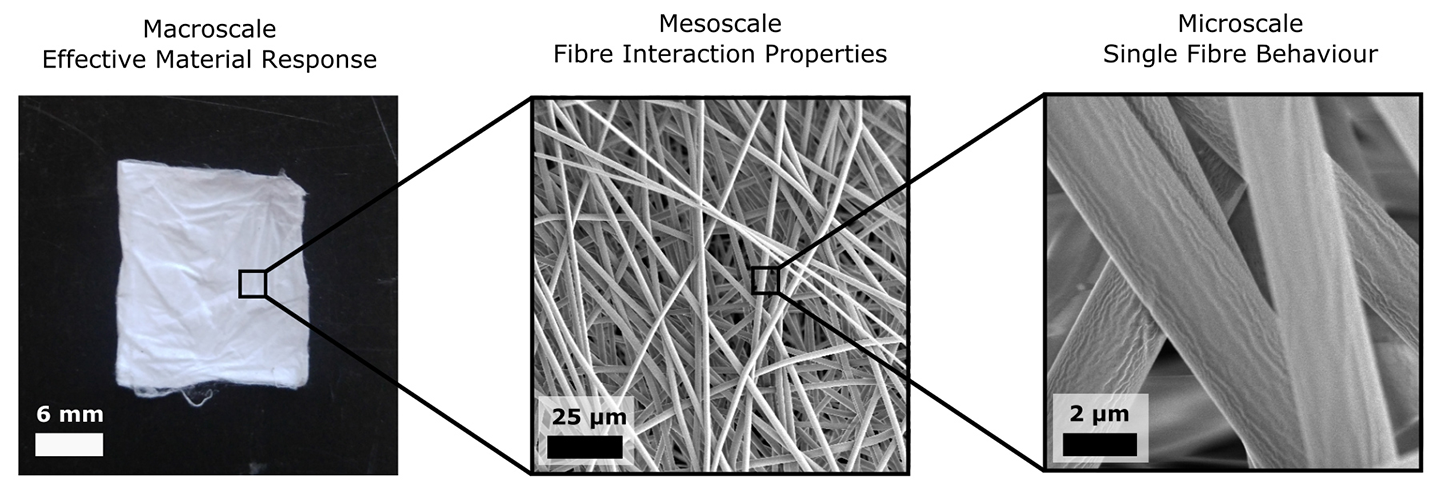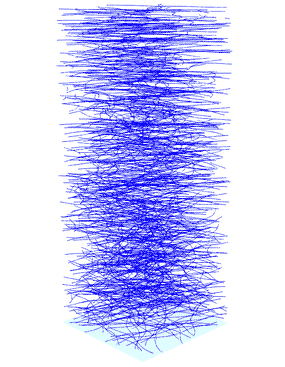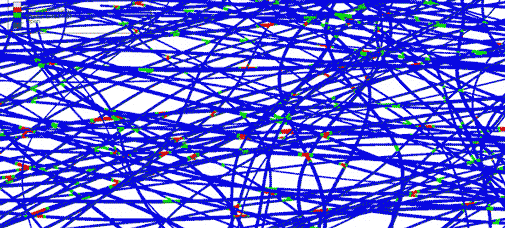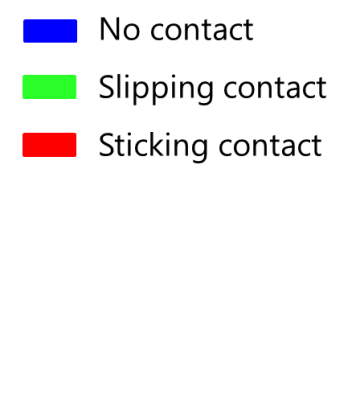Mechanical Interactions in Fibrous Networks
Fibrous materials have growing use in technical and biomedical applications. Electrospinning is a simple, cost efficient and versatile method to produce such materials consisting of ultrathin fibres with variable topology and a range of materials. Due to the versatility of the method electrospun material is used for numerous applications, such as filters, textiles, sensors, tissue engineered scaffolds and wound coverage.


Particular applications pose requirements on the mechanical properties and topology of the electrospun mats on multiple scales. In addition to experimental investigations, computational modelling is a versatile tool to study these aspects and investigate the functional interaction between these scales.
Objective
Unravel the complex relationship between fibre scale and macroscopic properties with a particular focus on the interaction between fibres by friction, compaction and the formation of cross-links.
Computational modelling of electrospun networks
Three-dimensional representative volume elements are created by “virtual spinning” similar to the manufacturing process.
With this model we are in the position to investigate even complex relations between fibres.


Besides helping interpreting experiments, this model will help to inform analytic continuum formulations.
Project Lead
Sebastian Domaschke
Partners
Empa, Swiss Federal Laboratories for Materials Science and Technology